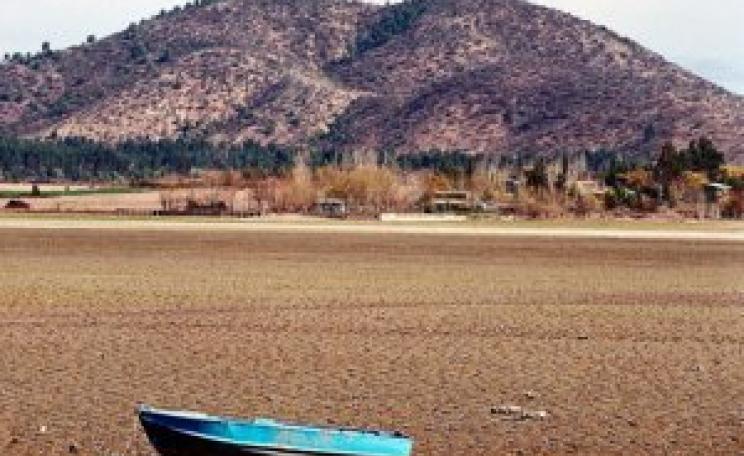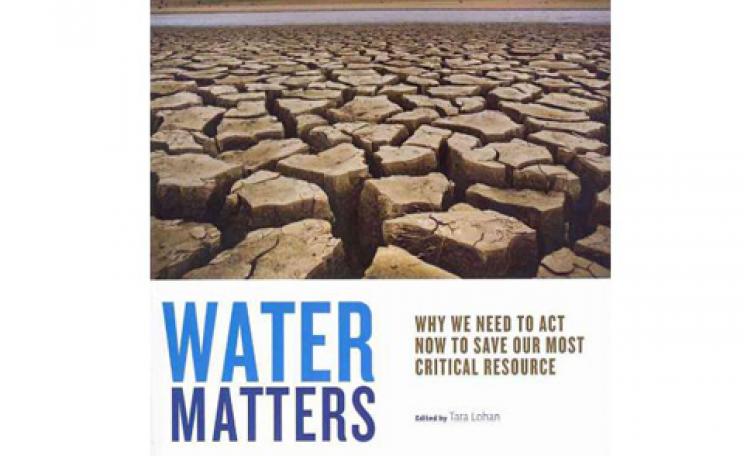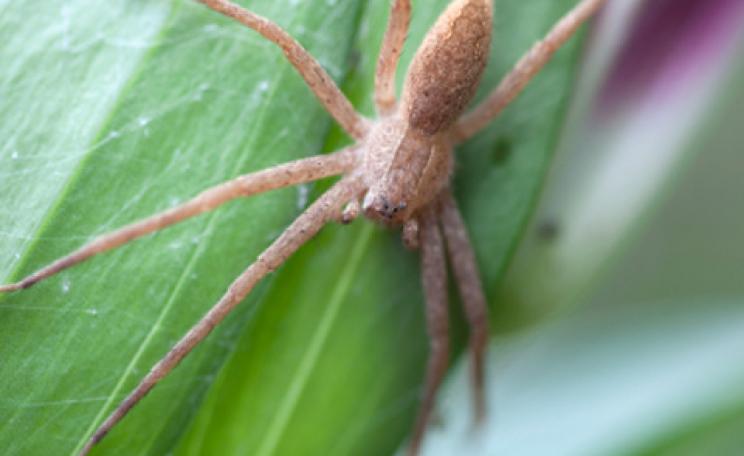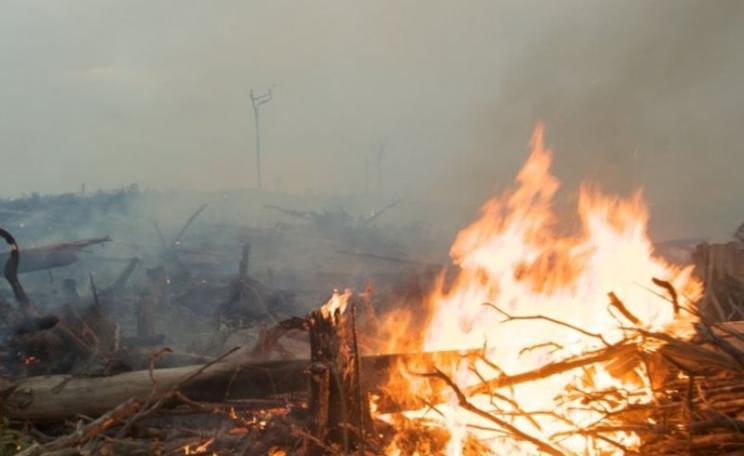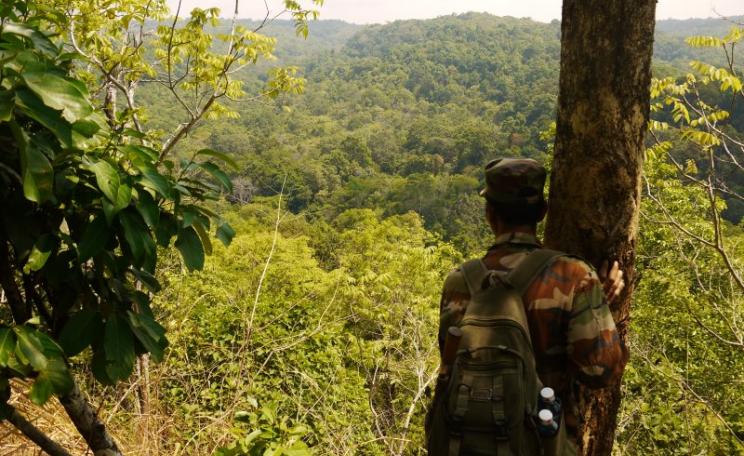If you are like me, global warming usually conjures up thoughts of melting glaciers and stressed-out polar bears. But the polar and boreal regions, while spectacular in many ways, are relatively poor in biodiversity. Species in chilly climes are in serious trouble, but they are vastly outnumbered by a biota that may be even more vulnerable to global warming – the myriad denizens of lush rainforests.
We all know that tropical rainforests are the Earth’s richest ecosystems biologically; and, with an expanse of forest the size of 50 football fields going up in smoke every minute, that rainforests and their wildlife are unquestionably imperilled by habitat destruction. But how could global warming jeopardise animals and plants that are already adapted for warm, sultry conditions?
In a big way, evidently. Tropical species differ from their boreal and temperate-zone counterparts in one key respect: most are thermal specialists. Rather than enduring a huge contrast between freezing winters and warm summers each year, as their northern counterparts do, tropical species live in hot or balmy weather year-round.
University of Pennsylvania biologist Daniel Janzen grasped this years ago when he pondered the profound way that mountains seem to create barriers for warm-adapted lowland species. In the tropics, he realised, most species are specialised for a narrow range of elevations; lowland species rarely ascend mountains because temperatures there drop by about 1°C for every 100m increase in altitude. For thermal specialists, this cooling effect is so powerful that even a modest 500m hillock can halt many lowland species in their tracks.
Just as importantly, mountain-dwelling species in the tropics often find the sweltering lowlands an insurmountable obstruction. Specialised for relatively cool, cloudy conditions, their montane populations become isolated from other such populations, halting gene flow and allowing them to evolve and diversify in situ – much as Darwin’s finches did on the Galapagos Islands, generating a kaleidoscope of biodiversity. In the tropics, each mountain or mountain chain tends to spawn its own set of unique species. Hence, tropical mountains are often hotspots of biodiversity, teeming with locally endemic species found nowhere else.
Some scientists now assert that tropical montane endemics are among the most imperilled species on Earth. ‘As the world gets hotter, these creatures have nowhere to go,’ says Stephen Williams, an ecologist with James Cook University in northern Queensland, Australia. ‘Their populations will wither and collapse until eventually they just disappear into heaven.’
Possum predicament
Williams knows of what he speaks. Using mathematical models and some of the best available datasets on tropical climates and biogeography, he has projected the responses to global warming of every endemic mammal, bird, frog and reptile species in the rainforests of north Queensland. His conclusions are jolting: if average temperatures rise by more than 2°C – which could easily happen this century, according to the Intergovernmental Panel on Climate Change – Williams’ models suggest extinctions will spike dramatically in north Queensland. ‘Basically,’ he says, ‘the high-elevation fauna could be stuffed.’
By Williams’ reckoning, the poster-child for global warming should be not the splendid polar bear or threatened caribou, but the white lemuroid possum (Hemibelideus lemuroides). This strikingly attractive animal, restricted to cool, misty rainforest above 1,100m elevation on Mount Lewis in north Queensland, hasn’t been seen by anyone in three years (belatedly, I spent a long night in 2008 searching for it myself). According to Williams, its death-knell may have been a heat wave that hit the region in late 2005, when drought-stressed trees began shedding their leaves and dead possums of several species were found along forest roads.
Another scientist who sees the heat wave as a likely culprit is Andrew Krockenberger, who studies possum physiology at James Cook University. ‘Highland possums never drink – they get all their water from the leaves they eat – and if temperatures rise the only way they can cool themselves is by panting,’ he says. ‘This leads to a lot of evaporative waterloss.’ If it gets too hot, Krockenberger believes, the possums die of dehydration.
Indeed, the heat wave might have been a double whammy. As temperatures climb, the cloud base that often surrounds tropical mountains rises higher or vanishes altogether. The clouds are vital: they keep the mountain cool and provide moisture for its dripping forests, which actually strip water droplets from the cloud mist. Hence, spiking temperatures increase water demands for wildlife while simultaneously depleting their montane environment of crucial moisture.
Other biologists, such as Raymond Huey at the University of Washington in Seattle, believe that tropical lowland species could be just as vulnerable as their mountaindwelling cousins. Since his graduate-student days at Harvard, Huey has been studying the thermal ecology of tropical reptiles. ‘I’m just so struck by how fine-tuned their temperature tolerances are,’ he says. ‘For example, if you heat an anolis lizard just a few degrees above its preferred foraging temperature, you risk killing it.’ Many lowland species in the tropics, Huey believes, are not very heat-tolerant, and are living dangerously close to their thermal maximum.
Other studies seem to confirm this view. During a summer heat wave in 2002, biologists in subtropical Australia were horrified when the flying foxes they were studying began dying in droves. Within nine colonies, at least 3,500 of the giant bats died in one day. At first, the heat-stressed animals sought shade and fanned themselves by wingflapping. Then, as temperatures climbed further, they panted heavily and licked their fur to promote evaporative cooling. Finally, when the thermometer hit 42°C, many flying foxes fell from the trees and died. Based on an exhaustive literature review, the authors believe such die-offs have become considerably more common since 1994.
The broader implications of such events are illustrated by a 2008 study led by Robert Colwell at the University of Connecticut, published in the journal Science. As global temperatures rise, the authors concluded, species residing near the bases of tropical mountains should migrate into the uplands, whereas mid-elevation species should go even higher. But many lowland species – such as those in the vast Amazon and Congo basins, which lack nearby mountains – will be stuck with nowhere to go. ‘We could lose a lot of the lowland species and there’d be nothing around to replace them,’ says Colwell. In such a manner global warming might degrade some of the biologically richest real estate on the planet.
Golden toads in a hole
But not so fast, argue critics such as Joseph Wright of the Smithsonian Tropical Research Institute in Panama: with our knowledge of most tropical species still grossly incomplete, it’s too early to conclude that global warming will cause widespread species extinctions. Critics like Wright tend to recall the famous golden toad of Costa Rica, a mountain endemic species whose demise from global warming was heralded a decade ago. The toad has indeed vanished, but it now seems far more likely that a virulent fungal pathogen, not climate change, was the actual driver.
Such false alarms aside, we still face striking uncertainties about future climate change. We can only guess, for instance, at how high atmospheric CO² levels will ultimately rise, or how hot it will eventually get. Another big worry is rainfall, which is likely to shift geographically as hotter conditions alter atmospheric circulations. Even a small decline in precipitation might turn some rainforests into deserts, especially if it occurs in the dry season when forests are already stressed and vulnerable to fire. Unfortunately, different projections of future rainfall vary enormously. For example, some global-circulation models predict that the Amazon basin will become marginally wetter by the end of this century, whereas others suggest it will collapse in a rage of droughts and fires.
Yet another big area of ignorance is how global warming will affect species interactions in the tropics. As some species migrate to higher elevations, novel ecosystems – with new combinations of species – will surely emerge. For instance, global warming is likely to increase the prevalence at higher elevations of many pathogens, which generally favour balmy conditions. In theory, this could imperil montane species as they encounter new, highly virulent diseases.
A leading advocate of this view is Costa Rica-based biologist Alan Pounds, who is among the most forceful voices of alarm about global warming. In 2006, Pounds and his colleagues argued in Nature that global warming was indirectly wiping out scores of endemic frog species in the Andean mountains of South America by predisposing them to the same deadly fungal pathogen that evidently killed off the golden toad. Pounds’ memorable quote – ‘disease is the bullet killing frogs, but climate change is pulling the trigger’ – was accepted uncritically by many. Others, however, such as Karen Lips at Southern Illinois University in the US, have recently challenged Pounds’ interpretation. Lips believes the pathogen is spreading in a wave-like pattern, much like other epidemics, with little if anything to do
with global warming.
The wages of synergy
Despite these and other uncertainties, a growing cadre of biologists now believes global warming could rival habitat destruction as a threat to tropical biodiversity – or at least that the two threats will conspire synergistically. Increasing habitat loss and fragmentation are likely to trap forest species, preventing them from shifting into more favourable climates or elevations. The small, fragmented populations that remain could then be battered by heat waves, droughts, storms and other manifestations of global warming, perhaps vanishing forever.
It’s an alarming scenario, and one that has tropical biologists wondering which battle to fight first – habitat destruction or global warming? I would argue that slowing habitat loss is the higher priority, in part because the rapid destruction of tropical forests produces about a fifth of all greenhouse gas emissions today. Hence, saving rainforests is one of the most effective ways to combat global warming, while helping to preserve some of the most imperilled species and ecosystems on Earth.
William Laurance is a senior staff scientist with the Smithsonian Tropical Research Institute in Panama. The author of nearly 300 articles and five books, he studies the impacts of habitat alteration and global change on tropical ecosystems in the Amazon, Africa and Australasia. A former president of the Association for Tropical Biology and Conservation, he has received numerous awards for his research and advocacy for tropical conservation.
Feeling the heat: victims of global warming
- A high-elevation rainforest specialist, the white lemuroid possum hasn’t been seen in more than three years. Australian biologists are uncertain whether it is a unique species or rather a distinctive subspecies of the lemuroid ringtail possum, a dark-brown animal also found only in upland rainforest in northern Queensland. The white lemuroid occurs only at high elevations (above 1,100m) near Mount Lewis, whereas its brown cousin has a somewhat larger, more southerly range and is found as low as 600m elevation. Sadly, we may never know for sure, because the white lemuroid now appears to be extinct.
- Researchers in Australia predict that scores of tropical mammals, birds, reptiles and amphibians could vanish if future temperatures rise by more than 2ºC. Many
tropical species, such as this chameleon gecko from Australia and hairy caterpillar from the Amazon, may already be living dangerously close to their maximum thermal limit.
This article first appeared in the Ecologist April 2009


